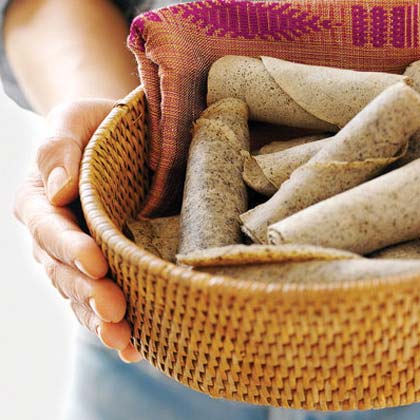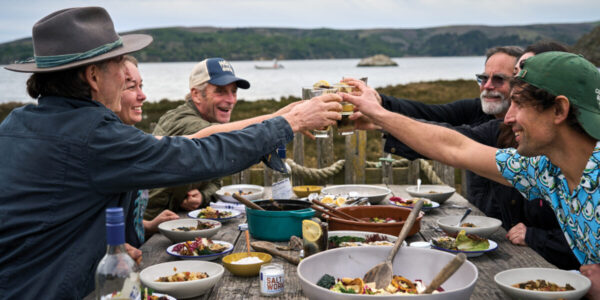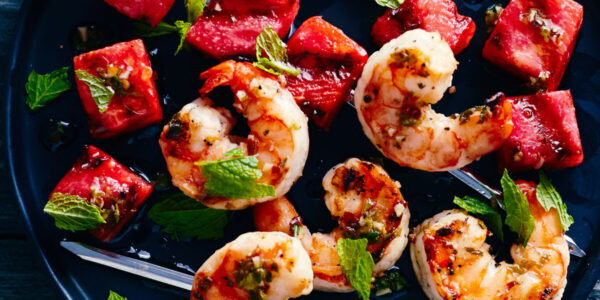Injera (Ethiopian flatbread)

How to Make It
In a large bowl, whisk together the flours, baking powder, and salt. Add eggs and club soda and whisk until batter is smooth. It should have the consistency of pancake batter; add more club soda if needed.
Spray a 10-inch nonstick frying pan lightly with cooking oil spray and set over medium heat. When hot, pour 1/3 cup batter into the pan, tilting to coat most of the bottom. Cook until flatbread appears bubbly and dry on top, 2 to 3 minutes; do not turn.
Slide bread onto a serving platter. Cover with a kitchen towel and keep warm in a 200° oven while you cook remaining breads.
Place one injera flat on each of six dinner plates and top with stew. Serve with remaining injera to scoop up the food.
Note: Nutritional analysis is per serving.
Ethiopian cooking 101:
Berbere: This heady spice mixture is the basis for all Ethiopian cooking. It can feature clove, cayenne, ginger, cumin, turmeric, and cinnamon, among other spices. Ground fenugreek seeds, which add a mildly sweet flavor, are also typical. Buy them at Middle Eastern markets or from Penzeys Spices ($09 per 1/4-cup jar; www.penzeys.com).
Injera: Authentic injera is made from fermented teff, a grain common in Ethiopia. The bread's spongy, bubbly texture is similar to that of a pancake. If authenticity is your aim, you can buy teff flour from Abyssinian Market ($25 for 5 lb.; www.abyssinianmarket.com).
Tej: This Ethiopian honey wine is the traditional match for spicy stews, but few retailers in the United States carry authentic imported tej. You can buy a bottle at many Ethiopian restaurants, but an accessible alternative is off-dry Riesling, which pairs beautifully with the spicy beef stew. Our favorite: Spätlese Rieslings from Germany's Mosel region.

